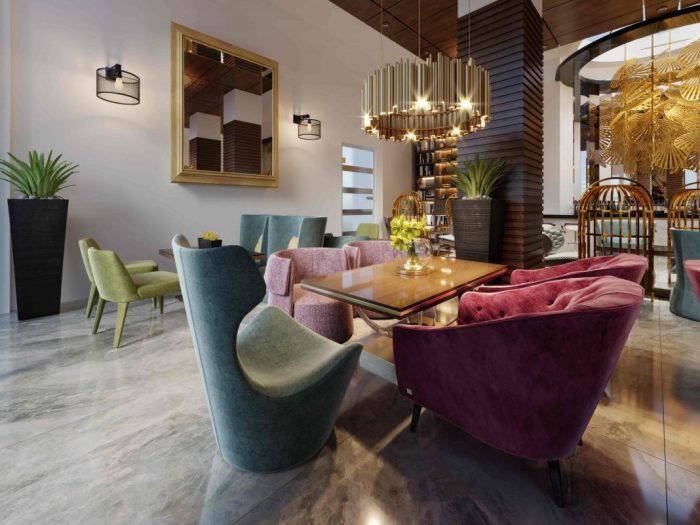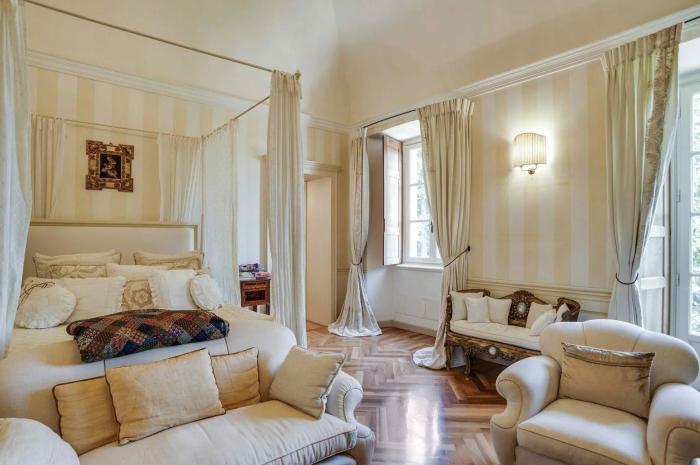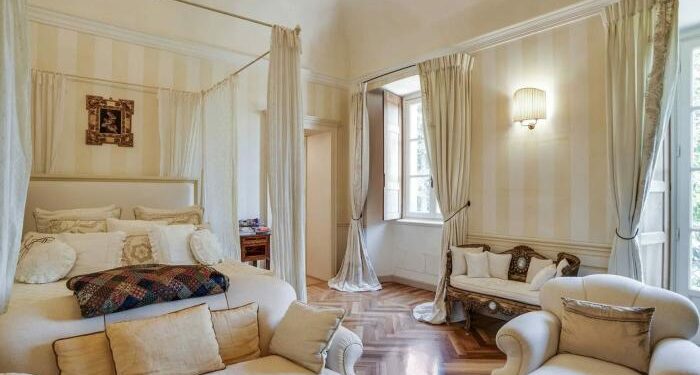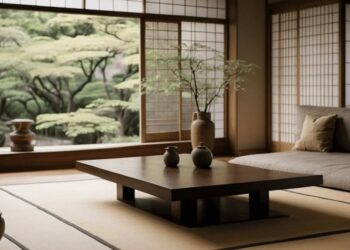Step into the world of European interior design with a focus on the top 10 trending styles. From the cozy elements of rustic design to the luxurious glamour of Art Deco, this captivating journey will showcase the diverse and unique characteristics defining interior trends across Europe.
Let's delve deeper into each style to uncover the essence of European interior design and the elements that set each trend apart from the rest.
Overview of Top 10 Interior Styles in Europe

Europe boasts a rich diversity of interior design styles, each with its own unique characteristics and influences. Let's explore the top 10 interior styles currently trending across the continent.
1. Scandinavian Style
Scandinavian interior design is known for its minimalistic and functional approach. Key elements include clean lines, neutral colors, natural materials like wood and leather, and plenty of natural light. This style is particularly popular in Northern Europe, including countries like Sweden, Denmark, and Norway.
2. French Provincial Style
French Provincial interiors exude elegance and sophistication. This style incorporates ornate furniture, delicate fabrics, and pastel color palettes. It is widely admired in France and other Western European countries.
3. Mediterranean Style
Mediterranean interior design draws inspiration from the coastal regions of Southern Europe. Elements like terracotta tiles, wrought iron accents, and vibrant colors create a warm and inviting atmosphere. This style is prevalent in countries bordering the Mediterranean Sea, such as Italy, Spain, and Greece.
4. Industrial Style
Industrial design embraces raw and unfinished elements like exposed brick, metal fixtures, and distressed wood. This style originated in urban areas but has gained popularity throughout Europe, especially in cities like Berlin and London.
5. Bohemian Style
Bohemian interiors are characterized by a mix of patterns, textures, and colors from around the world. This style promotes a free-spirited and eclectic vibe, with elements like layered textiles, vintage furniture, and global artifacts. It is favored by artists and creatives across Europe.
6. Modern Style
Modern interior design features sleek lines, geometric shapes, and a focus on simplicity. Neutral colors, minimal clutter, and innovative furniture design are hallmarks of this style. Modern interiors are popular in cosmopolitan cities like Paris, Milan, and Barcelona.
7. Art Deco Style
Art Deco interiors are characterized by glamour, luxury, and geometric patterns. This style emerged in the 1920s and is still admired for its opulent aesthetic. Art Deco influences can be seen in European cities like Prague, Budapest, and Brussels.
8. Victorian Style
Victorian interior design is inspired by the ornate and intricate style of the Victorian era. This style features rich fabrics, dark woods, and elaborate details like crown molding and ceiling medallions. It remains popular in the UK and other parts of Europe.
9. Mid-Century Modern Style
Mid-Century Modern design reflects the aesthetics of the 1950s and 1960s. This style emphasizes functionality, organic forms, and bold colors. Mid-Century Modern furniture pieces are iconic and have a timeless appeal across Europe.
10. Rustic Style
Rustic interiors celebrate the beauty of natural materials like wood, stone, and earthy tones. This style exudes a cozy and welcoming ambiance, with elements like exposed beams, handmade textiles, and vintage decor. Rustic design is popular in rural areas and countryside retreats across Europe.
Scandinavian Style
Scandinavian interior design is known for its simplicity, functionality, and minimalism. This style originated in the Nordic countries of Denmark, Norway, Sweden, Finland, and Iceland.
Origins of Scandinavian Interior Design
Scandinavian style emerged in the 1950s as a response to the long, dark winters in the region. The design focused on creating bright, airy spaces that emphasized light and nature.
Use of Natural Materials
One of the key features of Scandinavian style is the use of natural materials such as wood, leather, and stone. These materials bring warmth and texture to the space, creating a cozy and inviting atmosphere.
Color Schemes
Scandinavian interiors are typically characterized by a neutral color palette of whites, grays, and light earth tones. These colors help to reflect light and create a sense of openness in the space. Accents of black or bold colors may be used sparingly to add contrast and visual interest.
Industrial Style
Industrial style in European interiors draws inspiration from factories and warehouses, focusing on raw and unfinished elements to create a unique and edgy look.
Exposed Brick and Metal Elements
Industrial design often incorporates exposed brick walls and metal elements to add texture and character to the space. Exposed brick brings a sense of history and warmth, while metal accents provide a sleek and modern touch.
- Exposed brick walls create a rustic and industrial charm, adding depth and visual interest to the interior.
- Metal elements such as steel beams, pipes, and light fixtures bring an urban and contemporary feel to the space.
- The combination of brick and metal adds contrast and a sense of authenticity to industrial interiors.
Vintage Pieces in Industrial Style
Industrial style also embraces vintage pieces to enhance the overall aesthetic and create a sense of nostalgia within the space.
- Vintage furniture pieces like weathered leather sofas, distressed wooden tables, and antique industrial lighting fixtures complement the industrial look.
- Old factory carts, metal cabinets, and salvaged industrial machinery can be repurposed as unique decor elements in industrial interiors.
- The use of vintage pieces adds character and personality to the space, making it feel curated and lived-in.
Mediterranean Style
Mediterranean interior design is characterized by a warm and inviting aesthetic that draws inspiration from the coastal regions surrounding the Mediterranean Sea. This style often incorporates natural elements such as wood, stone, and terracotta, as well as bright and vibrant colors to create a light and airy atmosphere.
Influence of Coastal Regions
The coastal regions surrounding the Mediterranean Sea have a significant influence on Mediterranean interior design. The use of natural materials like wood and stone reflects the rugged landscapes of the coast, while the color palette of blues, whites, and earth tones mirrors the sea, sky, and sandy beaches.
Additionally, the abundance of natural light in these regions inspires the open and airy feel common in Mediterranean interiors.
Incorporating Warmth and Brightness
To incorporate warmth and brightness into Mediterranean interiors, consider using a combination of light-colored walls and natural materials
Bohemian Style

Bohemian style is characterized by an eclectic mix of patterns, colors, and textures that create a vibrant and unconventional look. This style draws inspiration from various cultures and eras, resulting in a unique and bohemian feel to the space.
Creating a Relaxed Bohemian Space
To create a relaxed Bohemian space, focus on incorporating comfortable and cozy furniture pieces such as low-slung sofas, floor cushions, and poufs. Layering textiles such as rugs, throws, and tapestries can add warmth and depth to the room. Embrace a mix of patterns like floral, geometric, and ethnic prints to enhance the bohemian vibe.
Incorporating Vintage and Handmade Elements
One of the key elements of Bohemian style is the inclusion of vintage and handmade pieces. Look for unique furniture items with distressed finishes, intricate carvings, or bold colors to add character to the space. Mix and match different textures like wood, metal, and rattan to create a bohemian-inspired look.
Incorporating handmade decor items such as macrame wall hangings, ceramic pottery, and woven baskets can further enhance the eclectic and artisanal feel of the room.
Minimalist Style
Minimalist style in European interior design is characterized by simplicity, clean lines, and functionality. This design approach focuses on removing unnecessary elements and clutter, creating a sense of calm and order in the space. Minimalist interiors often feature a neutral color palette, with an emphasis on natural materials like wood, metal, and glass.
Principles of Minimalism
- Focus on simplicity: Minimalist design aims to simplify the space by eliminating unnecessary decoration and clutter.
- Clean lines: Straight lines and geometric shapes are key elements in minimalist interiors, creating a sense of order and harmony.
- Functionality: Every piece of furniture and decor in a minimalist space serves a purpose, with an emphasis on practicality and usability.
Examples of Minimalist Furniture and Decor
- Minimalist sofa: A sleek, low-profile sofa with clean lines and neutral upholstery fits perfectly in a minimalist living room.
- Simple dining table: A minimalist dining table made of natural wood or metal, with clean lines and no unnecessary embellishments, is a staple in minimalist interiors.
- Neutral color palette: White, beige, gray, and other neutral colors are commonly used in minimalist interiors to create a sense of serenity and space.
Art Deco Style
Art Deco style is synonymous with luxury and glamour, characterized by its opulent and elegant designs that exude a sense of sophistication. This interior style emerged in the 1920s and 1930s, drawing inspiration from the Art Deco movement in art, architecture, and fashion.
Geometric Patterns and Rich Materials
Art Deco interiors often feature bold geometric patterns, such as chevron, sunburst, and zigzag motifs, which add a modern and dynamic touch to the space. These patterns are complemented by the use of rich materials like marble, brass, lacquer, and exotic woods, creating a lavish and extravagant ambiance.
Influence of the 1920s and 1930s
The Art Deco style was heavily influenced by the societal changes and technological advancements of the 1920s and 1930s. The era's fascination with speed, luxury, and modernity is reflected in the streamlined shapes, sleek lines, and shiny surfaces that are hallmarks of Art Deco design.
This style became synonymous with wealth and status, as seen in the grandeur of buildings, furniture, and decor that defined the period.
Rustic Style
Rustic style in interior design emphasizes a cozy and natural feel, drawing inspiration from the simplicity and beauty of the countryside. This style creates a warm and inviting atmosphere that is perfect for those looking to bring a touch of nature indoors.
Cozy and Nature-Inspired Elements
Rustic interiors often feature elements such as exposed wooden beams, stone accents, and earthy colors like browns, greens, and muted blues. These elements help to create a sense of warmth and connection to the natural world, making the space feel inviting and comfortable.
Use of Wood, Stone, and Earthy Colors
Wood is a key material in rustic design, often used for furniture, flooring, and decorative accents. Stone is also commonly incorporated, whether in the form of a fireplace, accent wall, or flooring. Earthy colors like warm browns, soft greens, and neutral tones are used to enhance the natural feel of the space.
Tips for Incorporating Rustic Elements
- Opt for wooden furniture with a distressed finish to add character and charm to your space.
- Include cozy textiles like wool blankets, faux fur throws, and plush rugs to enhance the comfort factor.
- Add natural elements such as potted plants, fresh flowers, or woven baskets to bring a touch of the outdoors inside.
- Mix old and new pieces to create a balanced look that feels lived-in and comfortable.
- Embrace imperfections and embrace the beauty of natural materials to create a truly rustic feel in your European home.
Mid-Century Modern Style
Mid-Century Modern Style is characterized by a blend of functionality, simplicity, and organic forms. This design aesthetic emerged in the mid-20th century and has since become a timeless and iconic style in interior design.
Influence of Scandinavian and Bauhaus Design
Mid-Century Modern Style draws influences from Scandinavian design with its emphasis on clean lines, minimalism, and natural materials. The Bauhaus movement also played a significant role in shaping this style, particularly in its focus on functionality and the use of industrial materials.
Organic Shapes and Clean Lines
In Mid-Century Modern interiors, you will often find furniture and decor pieces characterized by organic shapes such as curved edges and tapered legs. Clean lines are a key feature, creating a sense of simplicity and elegance in the space. These elements contribute to the overall sleek and sophisticated look of Mid-Century Modern design.
Eclectic Style
Eclectic style in interior design involves a mix-and-match approach that combines different styles, eras, textures, and colors to create a unique and visually appealing space.
Blending Different Styles and Eras
One key aspect of eclectic style is the ability to blend different styles and eras cohesively. This can be achieved by focusing on a unifying element such as color, texture, or shape to tie the various pieces together. For example, mixing modern furniture with vintage accents can create a harmonious balance between old and new.
Creating a Visually Stimulating Space
- Use a mix of furniture styles: Combine traditional, contemporary, and vintage pieces to add depth and interest to the space.
- Experiment with colors and patterns: Play with bold colors, intricate patterns, and unexpected combinations to create a dynamic and vibrant atmosphere.
- Incorporate art and accessories: Display a variety of art pieces, sculptures, and decorative items to add personality and character to the room.
- Layer textures: Mix different textures like wood, metal, glass, and fabric to add richness and dimension to the space.
Summary
As we conclude our exploration of the top 10 interior styles in Europe, it becomes evident that each style brings its own charm and personality to the design landscape. Whether you're drawn to the simplicity of minimalism or the vibrant mix of eclectic design, there's a style to suit every taste and preference.
Stay inspired and continue to experiment with these captivating European interior trends in your own living space.
Top FAQs
How do you define the Mediterranean style?
The Mediterranean style is characterized by its warm and inviting elements inspired by coastal regions, incorporating bright colors, natural textures, and an emphasis on creating a relaxed and airy atmosphere.
What sets Mid-Century Modern style apart?
Mid-Century Modern design features clean lines, organic shapes, and a blend of Scandinavian and Bauhaus influences, creating a timeless and sophisticated look that is both retro and contemporary.
How can I incorporate industrial elements into my home?
You can add industrial flair to your space by incorporating exposed brick walls, metal fixtures, and vintage pieces like industrial lighting or furniture to create a unique and edgy aesthetic.






